The visual system receives, organizes, and interprets signals. It is the foundational phenomenon that helps us interact with and relate to the physical world. As with many circuits in our nervous system, it is composed of dozens of specialized and morphologically unique cells, each playing a specific role in constructing our sense of sight.
In the past four years, I have embarked on three road trips to visit distinct and stimulating natural wonders, ranging from the giants of Sequoia National Park to the rainbow quartz of Petrified Forest National Park. Similar to how the American western landscape is composed of structured ecosystems that feed into the biome at large, our nervous system is a collection of specialized and interacting neural circuits that form into the greater nervous system.
The passage of time has informed the composition of these landscapes, as it has also informed the structure of sight. The morphologies of macroscopic and microscopic worlds are perpetually changing when observed from the timescale of megaannum.
This exhibit is meant to compare the unique structure of the visual system to unique structures in the natural world.
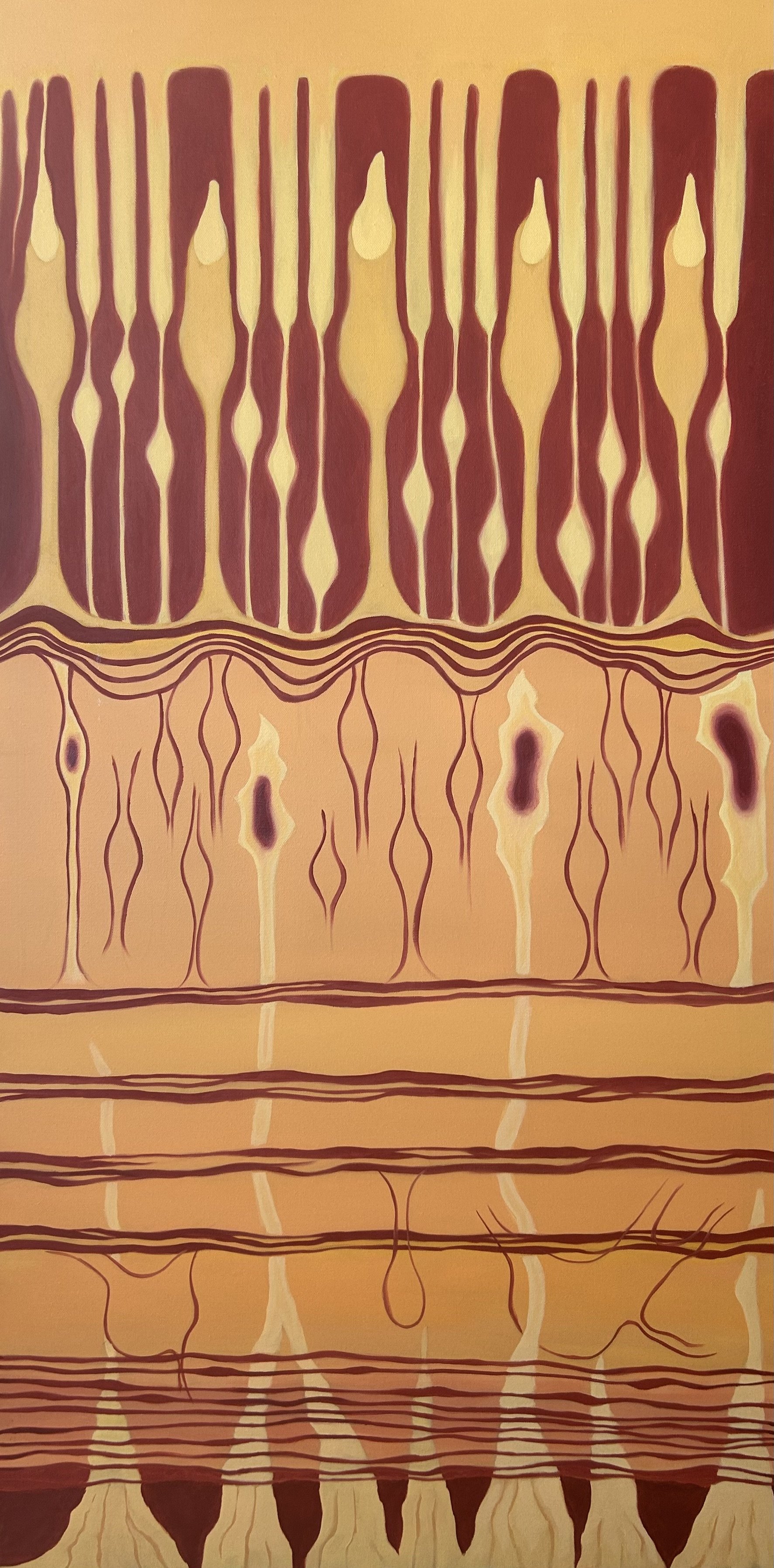
"Circuit" represents the multiple layers of cells in the retina that capture light and convert it into electrical signals. Photoreceptors (cones and rods) respond to photons entering the retina; these signals are transmitted through the layers of the retina by horizontal cells, bipolar cells, amacrine cells, and retinal ganglion cells. These layers of cells help identify light/dark points and perceive edges and movement. Müller cells, spanning multiple layers of the retina, maintain the structural and functional stability of the retinal cells. This preliminary visual information is then sent through the optic nerve to the lateral geniculate nucleus (LGN). Based on a drawing by Ramón y Cajal (1911) (4' X 2', $900)
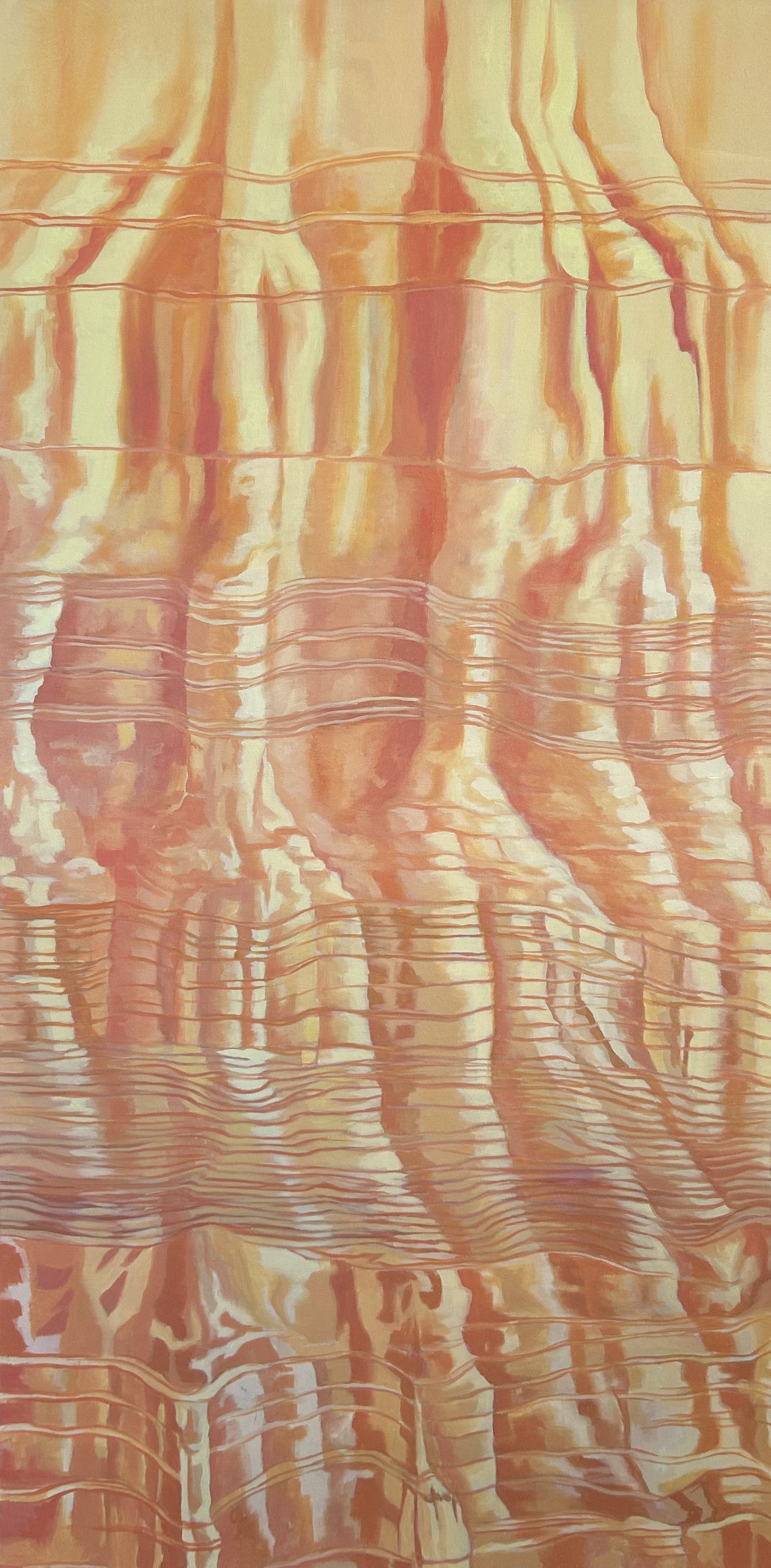
"Process" parallels the structure and function of the layers of retinal cells; absorbing light, converting light information into edges and shapes, and helping us perceive dimension and assign meaning to objects. Descending the canvas, through the increasingly complex combination of lines, light, and shadows, a familiar formation appears: a canyon. Inspired by Grand Canyon National Park (4' X 2', $900)
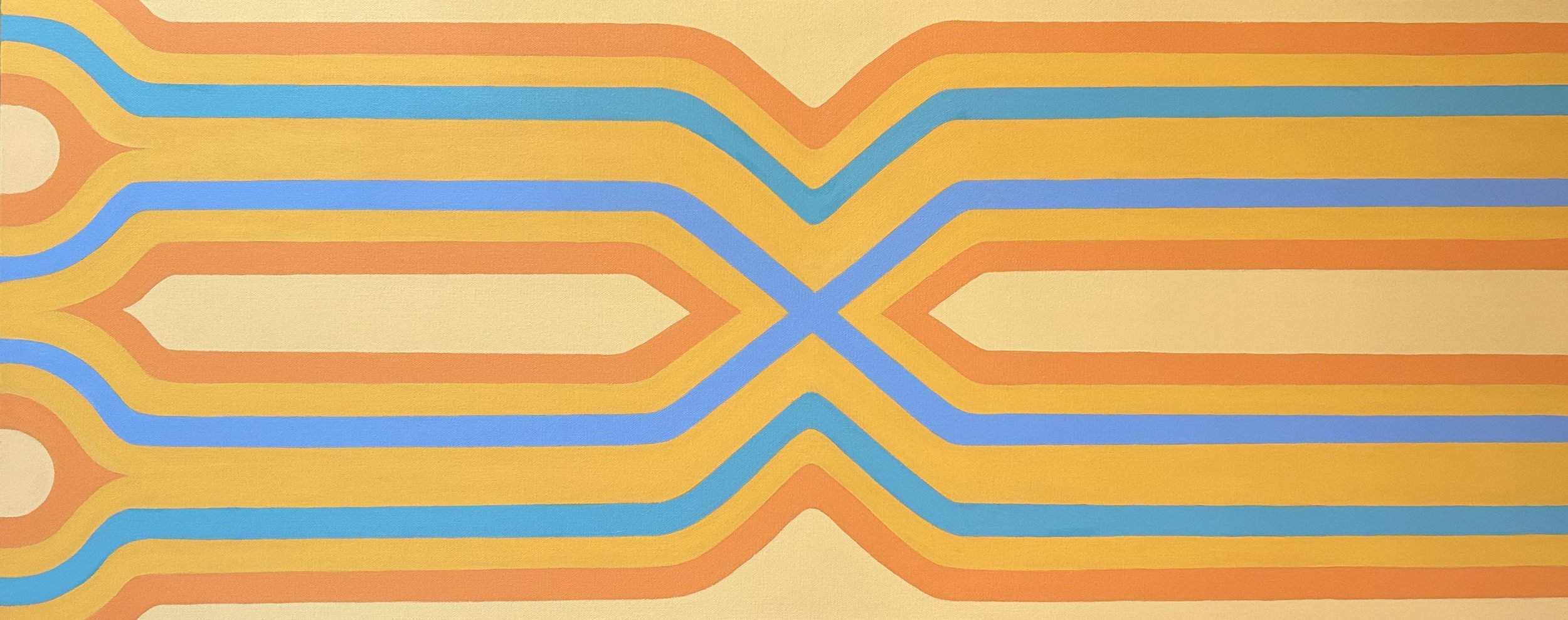
"Chiasm i" stylizes the information highway from the right and left visual fields to the corresponding visual hemispheres of the brain, starting in the retina and ending in the lateral geniculate nucleus (LGN). The LGN receives signals from the ganglion cells of the retina and sends those signals to the visual cortex. (40" X 16")
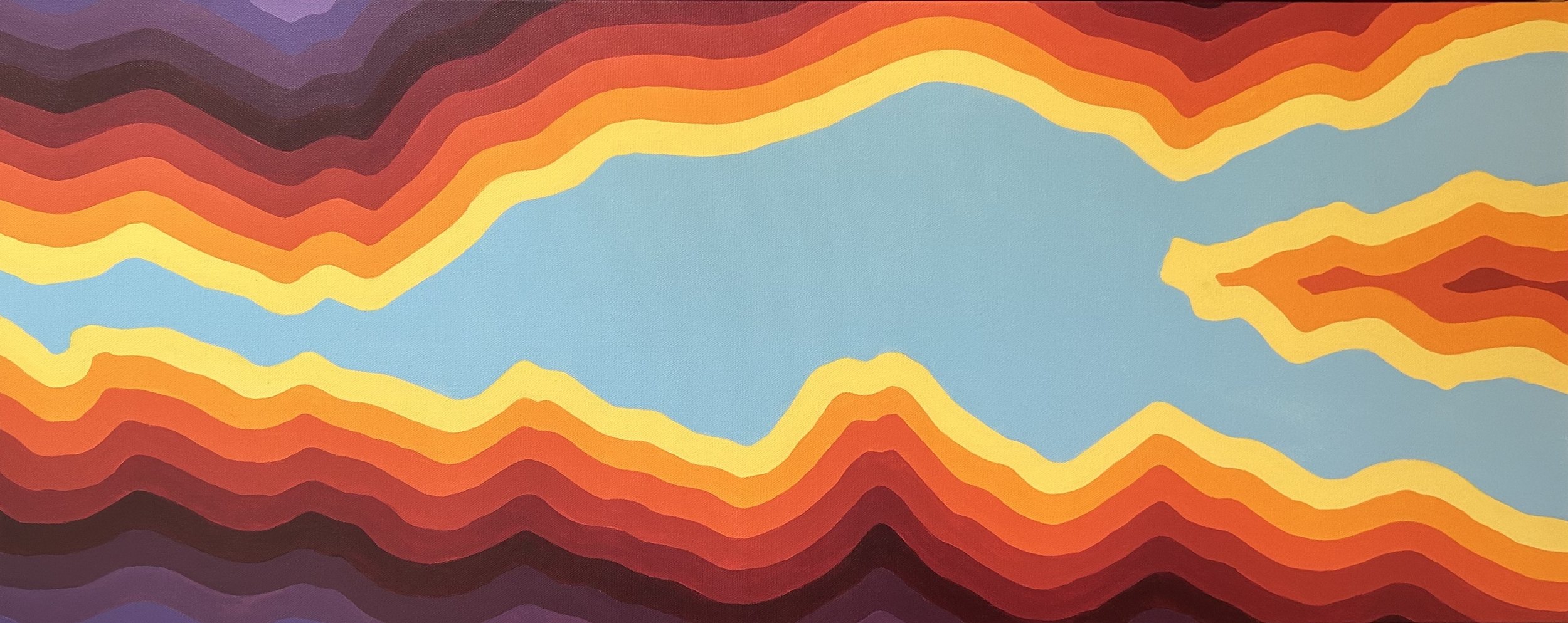
"Chasm ii" represents a view looking up from the base of a slot canyon, where millions of years’ worth of clay deposits have been eroded away, revealing distinct layers of color. The slot canyon itself is the physical pathway by which rainwater has traveled for millions of years. Inspired by Antelope Canyon (40" X 16", $600)
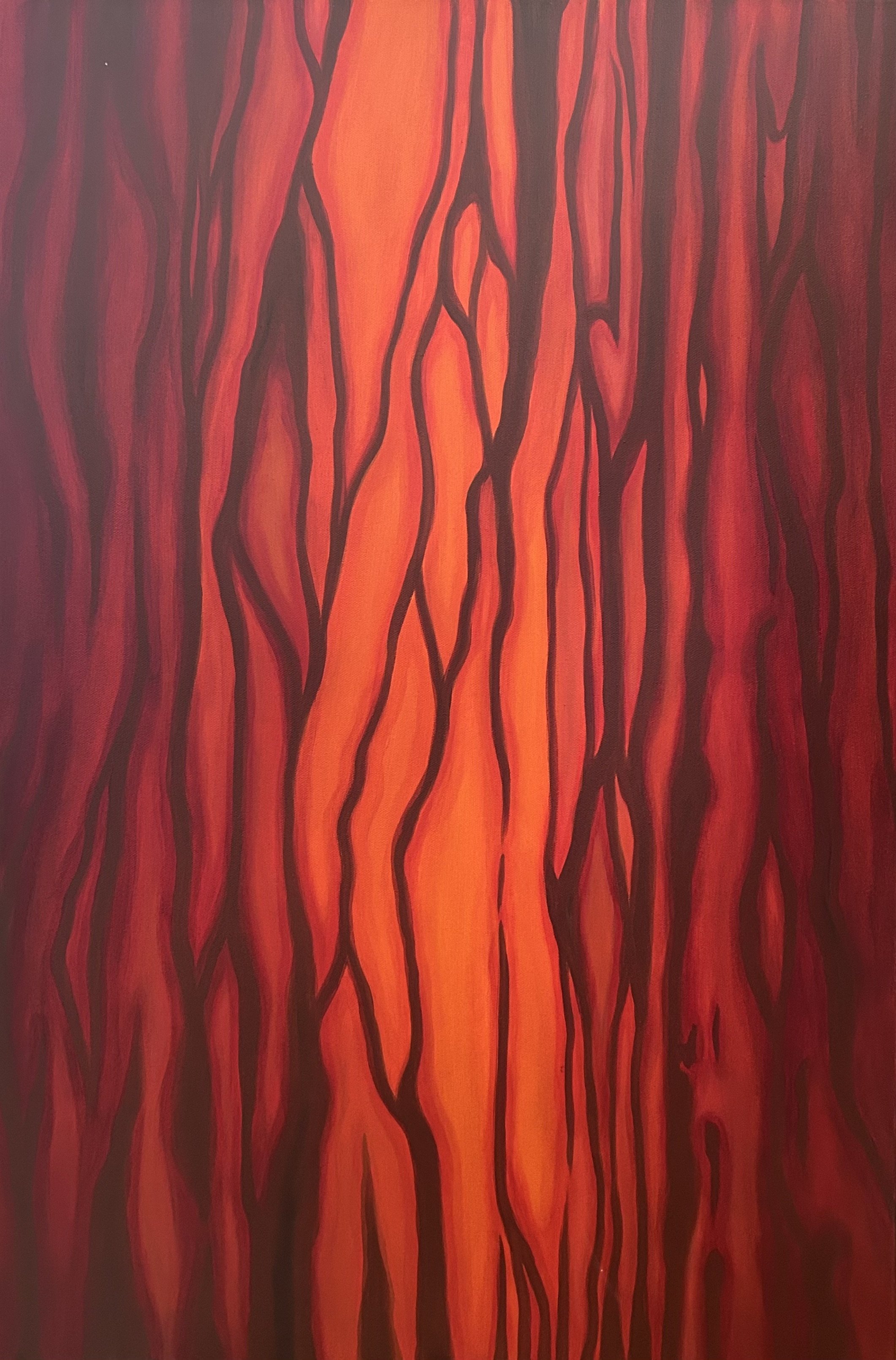
"Barrier" conveys a close up of a sequoia tree’s trunk, its bark casting a unique jagged pattern. The trunk has evolved to produce fissures of brittle, tannin-rich bark, which protects the tree from wildfires and animals and gives the trunk its distinctive reddish coloring. Inspired by Sequoia National Park (20" X 30")
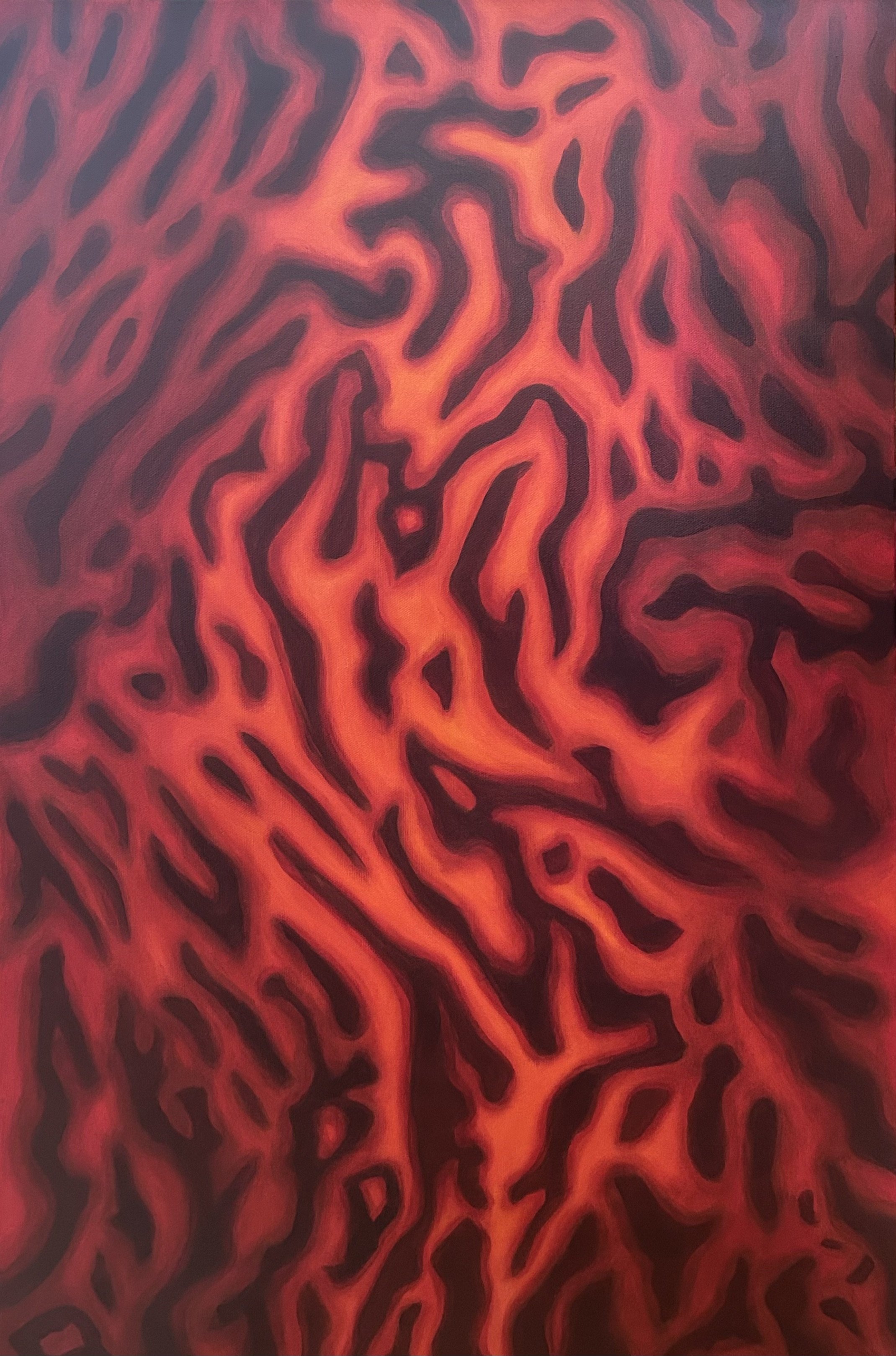
"Dominance" represents the segregation pattern of visual information originating from the left and right eyes. Axons from the LGN deposit onto area V1 of the visual cortex with a distinct, zebra-like patterning, displaying the separation of inputs from the left and right eye for the same visual field. The pattern is unique to each person and its formation relies on electrical activity originating from the LGN as an infant. Inspired by the ocular dominance columns in area V1 marked by tritiated proline (a radioactive marker) from Hubel, Wiesel, and Stryker (1978) (20" X 30")